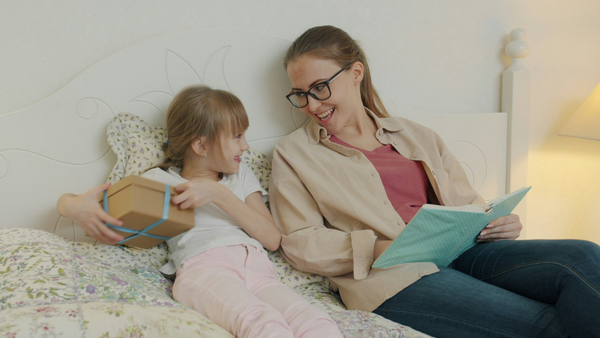Parkinson's disease (PD) affects the brain and causes symptoms both related to and not related to movement. A recent systematic review1 looked at people who experience freezing of gait (FOG), a common motor symptom in Parkinson’s. The review examined how often people with FOG also experienced sleep disturbance, a common non-motor symptom.
Studying how these problems interact with each other can help us understand more about Parkinson’s. It can help us learn more about whether symptoms coincide with each other, or whether the appearance of one symptom may indicate a stronger likelihood of other symptoms arising in the future.
Sleep disturbances and Parkinson’s disease
Anywhere from 42-98% of people with PD often experience trouble sleeping at night, as summarized by the authors of the meta-analysis.1 There are several kinds of sleep disorders that can occur in people with PD. For example, 15-51% report feeling excessively sleepy during the day1 and 33-46% of PD patients have REM sleep behavior disorder (RBD).2
RBD is a condition where people act out their dreams during sleep, such as kicking, punching, or making vocal sounds. People with RBD can potentially cause injury to themselves or others in their sleep.3
What is freezing of gait (FOG)?
During a freezing of gait episode, a person suddenly can’t move their feet, making it hard to walk. A person experiencing FOG may feel like their feet are rooted to the ground for a short period of time. They may be at greater risk of falling during one of these episodes.4
Systematic review by Milane et al.
A recent review of the scientific literature published in the journal Sleep Medicine1 examined if FOG and sleep disturbances tend to co-occur in Parkinson’s disease patients. This meta-analysis looked at several different clinical studies to see what big picture emerged from all of those different studies.
In each of the studies the review considered, researchers used special tools and tests to confirm a PD diagnosis. They also checked for sleep issues and freezing of gait. Many of the studies measured sleep problems and FOG using tools such as the new FOG questionnaire (NFOG-Q) and the Parkinson’s Disease Sleep Scale (PDSS1). Taken together, the eight studies included 2025 PD patients with sleep problems and 3226 without.
A correlation between FOG and sleep disturbances in Parkinson’s
The authors of the review found that people with sleep problems had a higher chance of experiencing FOG than those without sleep disturbances.
One study cited in the review found that 73% of PD patients with a PDSS1 score below 6 had FOG, compared to 24% with a score of 6 or higher. A low score on the Parkinson’s Disease Sleep Scale (PDSS) indicates a very significant disturbance of sleep. It also found that people with excessive daytime sleepiness were slightly more likely to have FOG (28%) compared to those without (20%).
Interestingly, two of the eight studies found no significant difference in the incidence of FOG between those with and without sleep problems. However, most of the studies considered in the review suggest that PD patients with sleep problems are more likely to have FOG.
What to do if you have a Parkinson’s disease-related sleep disturbance
After looking at all these studies with data from the thousands of people involved, the researchers concluded that patients with PD who have sleep disturbances also tend to experience FOG.
The positive news is that since sleep disturbances can show up quite early in a person’s Parkinson’s journey, they may provide a sign that you need to take action. The authors of the review hypothesize that managing a sleep problem could potentially prevent or delay the eventual development of FOG in Parkinson’s disease.
If you have Parkinson's and experience sleep issues3 or freezing of gait (FOG),4 discuss those issues with your healthcare provider. They can recommend strategies like simple lifestyle changes or therapies to manage your sleep and mobility issues.
How to deal with a FOG episode
If freezing of gait happens to you, speak with your doctor to understand how to improve it. You may also find these suggestions from the Parkinson’s Foundation useful in managing freezing:4
- Take a higher step than normal. Try marching, goose-stepping, or pretending that you’re stepping over a tripwire.
- Try walking to music. Keeping time with music can help some people move when they’re frozen. If you’re too frozen to play music from your phone, even humming or singing to yourself can help.
- Implement the “4 S” strategy: Stop your movements, Sigh an audible breath, Shift your weight back and forth, and take a big Step to resume your walking.
(Written by Annapurna Maity, PhD; reviewed by Noelle Patno, PhD 8/26/24)
References:
- Milane, T., et al. (2024). Comparison of number of people with freezing of gait in Parkinson’s disease with and without sleep disturbances: A systematic review. Sleep Medicine.
https://www.sciencedirect.com/science/article/pii/S1389945724002697 - Mahmood, Z., et al. (2020). REM Sleep Behavior Disorder in Parkinson’s Disease: Effects on Cognitive, Psychiatric, and Functional outcomes. J. Int. Neuropsychol. Soc. 26(9): 894–905. doi:10.1017/S1355617720000430
- Sleep Disorders. Parkinson’s Foundation. Accessed August 28, 2024. https://www.parkinson.org/understanding-parkinsons/non-movement-symptoms/sleep-disorders
- Freezing. Parkinson’s Foundation. Accessed August 28, 2024. https://www.parkinson.org/living-with-parkinsons/management/activities-daily-living/freezing







